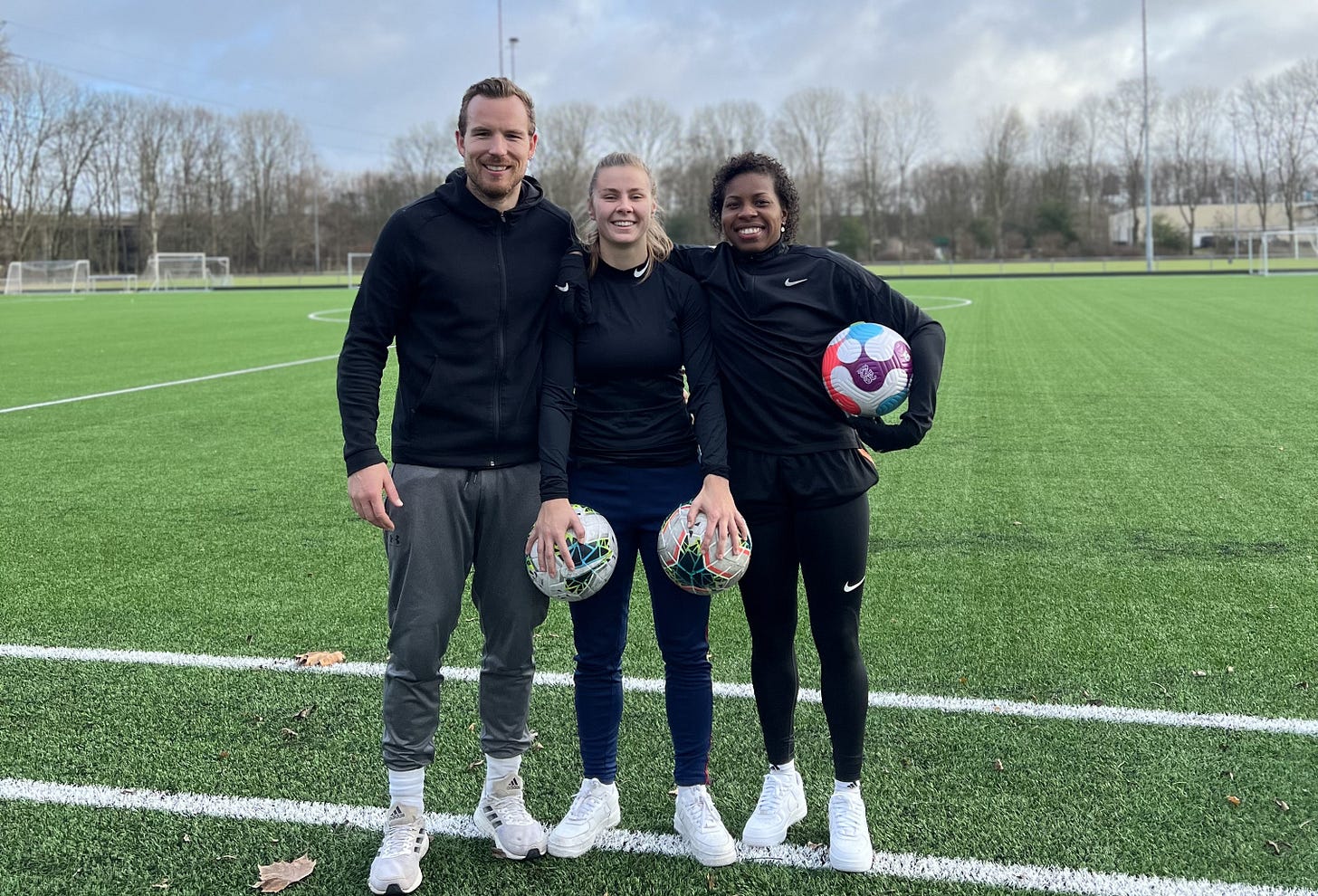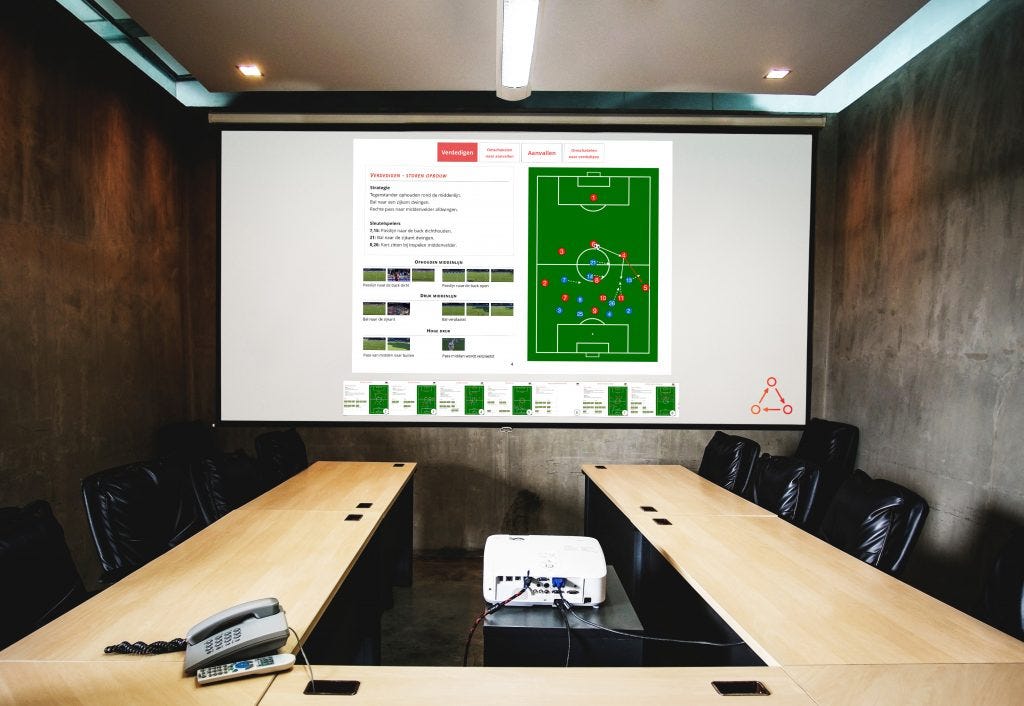How Dutch company Tactalyse is helping its national team stars thrive
Started by founder Loran Vrielink in 2016, Tactalyse works with the likes of Victoria Pelova, Lineth Beerensteyn and Sherida Spitse to improve their tactical knowledge of games and their roles...
When he launched Tactalyse (initially as Tactical Analyst) back in February 2016, Loran Vrielink had no idea what it would become.
An ex-professional basketball played, Vrielink’s true passion was football, and he wanted to be able to help players, primarily in his Netherlands homeland, to take their game to the next step.
That’s where over the past seven years Tactalyse has come in. Initially working with a handful of players in Vrielink’s network, the company has grown into a monster back home, although home now for Vrielink is where it takes him.
The premise is to use in-depth tactical analysis in private one-on-one sessions to help improve a player’s game. They have worked with the likes of Dutch internationals Stefan de Vrij and Liverpool’s Cody Cakpo, helping the latter in the build-up to a breakthrough 2022 World Cup for the forward.
Over 250 players have now used Tactalyse, and Vrielink now has 32 licenced coaches working with players around the world, as far away as USA and Australia.
He has five full-time analysts and will hire two more in January to keep up with the ever-growing nature of the business, but the women’s game is also something he has expanding into.
A former second division head coach in the women’s game in the Netherlands, Vrielink initially started working with Sherida Spitse, a staple of the Dutch national team over the years, and recently has also started working with Arsenal’s Victoria Pelova and Juventus striker Lineth Beerensteyn.
“It’s changing behaviours and understanding your qualities…”
Caitlin Dijkstra, the promising young defender who signed for Wolfsburg in the summer, is his latest catch, while he has young players in the US college system and has started working with a couple of players in England, although isn’t ready to reveal their identities just yet.
Given the upturn in form for those he works with – Beerensteyn is the top scorer in Serie A and the UEFA Nations League this season, while Pelova is thriving with Arsenal – I jest whether or not it’s all down to him when we sit down to speak.
“I will definitely not take all the credit,” he laughs, before going into detail about what it is exactly he and his coaches and analysts do with the players they work with. “It’s changing behaviours and understanding your qualities.
“Lineth for example, she knows she has speed, she’s good at one on ones, is good at finishing, so the only thing I do is change her perspective in certain situations. Last season at Juventus she was a winger and we said ‘the further away you are from the goal, the harder it is, so push up and you can create two more chances a game’, just by understanding when to drop and when not to.
“How do you learn? Getting the ball. The understanding of you should not always be on the ball when you’re higher up the pitch, but the higher you are as an attacker the more effective you will be. With Lineth, we changed the body orientations towards the goal, with one touch she can kill everyone with her speed.”
Check out over 100 more unique stories in WFC’s Premium section, available for just £45 for 12 months, paid in one go, or a £6 a month rolling subscription.
All subscriptions come with a 7-day free trial to allow you to explore our full archive.
Plus, guarantee you everything that is to come over the next 12 months…
As we speak, it’s the morning after Beerensteyn scored twice against Belgium to help Netherlands qualify for the UEFA Nations League finals, and a few days after she scored another two at Wembley against England.
“The rebound last night, she recognises those now. As a basketball player myself, you rebound on every ball, it’s two goals per season minimum. I teach that to every attacker and the Belgium game was a great example, it was her first goal off a rebound, and the other was using her speed and body position. I don’t want to take all the credit, we just change the perception of how they use their qualities.”
Vrielink only started working with Beerensteyn and Pelova 18 months ago, but has worked with the experienced Spitse for five years.
They use clips of experienced players as study sessions online for younger players, and any player who wants to work with them gets a free session to see what it’s all about.
They analyse every game, creating up to 400 clips based on all positions and go through them with their players at their request, when they want.
He admits at first they would go out and pitch to players, but now it’s as much the other way around as it is the former, with players actively looking to work with Tactalyse.
“Nowadays, it’s both, luckily! We have a sales manager, a marketing manager, so we reach out to players and offer every player that free session. We want them to know what we do. At their clubs, they have physios, analysts, everything, but very few have a tactical coach.
“We have Arianna Caruso now too, the Juventus midfielder, so we need to have coaches everywhere who speak all languages. On the women’s side, they are more eager to learn I find.”
He adds “yes,” with a smile, when I mention Caruso also scored on the same Tuesday night as Beerensteyn as Italy finished second in their group behind world champions Spain and ahead of Sweden.
How different is it from player to player? Spitse is 33 and heading towards the back end of her career, while Pelova is just 24 and made the big move to the Barclays Women’s Super League at the start of the year with Arsenal.
“I’m always curious if coaches know how difficult it is for a player to just change positions…”
“It’s completely different,” he says. “There’s a decade between Sherida and Vicky, that’s why it’s about one on one coaching and having various coaches with different experiences.
“The league doesn’t matter so much because the one on one actions remain the same, only the speed of making those decisions is higher. Vicky for example is really fast with her feet, she can dribble, so we analyse the leagues based on that, but with Vic it’s more about she was a winger or a number 10, now at Arsenal she’s more a six or an eight, and with the national team she’s a right wing-back!
“That for us is more difficult than helping her adjust to a new league, because she had never played defence before. We have a database with over one million clips, so we can work with her based on other examples in that position, then it’s just coaching them.”
He adds “It gives a bit of uncertainty because you change what the player expects from you. Even Cody, he was a left winger at PSV, now he’s a striker or a number 10 at Liverpool, so things change and our analysis has to change. I’m always curious if coaches know how difficult it is for a player to just change positions, the orientation differences are big.”
Vrielink goes into further detail having worked with both Pelova and Beerensteyn for a year and a half now, working with them as both also changed positions as well as clubs.
“For Lineth, it was a transition, she hasn’t played as a striker really for the national team but she has for the past year because Vivianne Miedema has been out. Even as a winger, she was a right winger with Netherlands, but in her club, she was a left winger. We expect players to just perform, but it’s a lot more complex than I think the outside world thinks.
“You saw that assist from Vic at Wembley last week? She gets the ball more in those positions now, she knows how to use it better, it’s about adapting yourself to the game situation and who you are playing. It can take some time to adapt. Lineth scoring two goals in a game is not a surprise, it’s just a result of a lot of work. It was difficult for her in the media, the World Cup was difficult for her, but we kept on our plan of working on getting more and more chances each game and look at her now.”
Vrielink is keen to branch out further and is looking forward to working further with new recruits Caruso and Dijkstra, as well as players in England.
Tactalyse also has several players in the Dutch women’s youth teams at under 23, 19 and 16 levels. There are six promising young players in the US college system, and one who is in the US youth national teams, and he has employed two coaches in the USA lately to work with them.
“I really believe the women’s game will evolve so much and I want to be a part of that. They are thankful for the job we do every day, like I said, they are more eager to learn. For us, it’s also more accessible than men’s football. I can go and see Vic, Sherida and Lineth whenever, no problem, there’s a lot of potential there and the future is exciting.”






